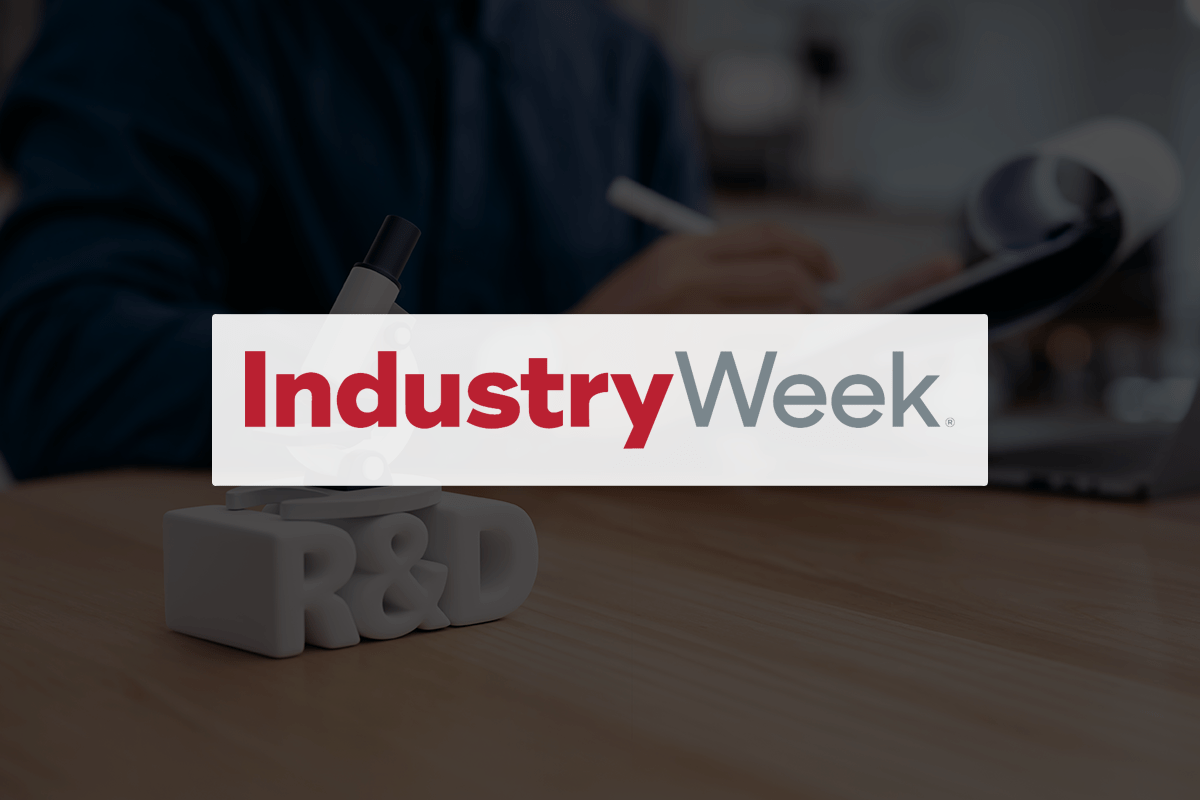[vc_row bg_type=”bg_color” bg_color_value=”#f5f5f5″ css=”.vc_custom_1618938311697{margin-top: 0px !important;margin-right: 0px !important;margin-bottom: 0px !important;margin-left: 0px !important;padding-right: 1em !important;padding-left: 1em !important;}”][vc_column][vc_column_text el_class=”article-info”]by Michael Siegel, Managing Director, alliantgroup
March 14, 2017 | published in NTMA.org[/vc_column_text][/vc_column][/vc_row][vc_row][vc_column][vc_column_text]
What does “research and development” have to do with contract manufacturing?
According to the federal government (and most state governments), quite a bit. In fact, R&D could be the ticket you need to slash your company’s tax liability; and it’s all thanks to one misunderstood tax incentive.
The Research and Development (R&D) Tax Credit is one of the most generous tax incentives out there, with the IRS estimating that $10.8 billion in federal tax credits were claimed in 2012 alone (the most recent tax year on record). Considering this estimate doesn’t include credits claimed by S-corps or LLCs or the amount of R&D credits claimed at the state level, the amount of total R&D credits claimed for 2012 is likely much higher than reported.
Perhaps most encouraging for fabricators and metal forming companies (an important part of the broader manufacturing sector) is that manufacturing, the largest industry segment with 39 percent of all R&D credit claimants, was also the largest vertical in terms of the total dollars claimed at 61 percent.
So, how valuable can the R&D Tax Credit be for a job shop or contract manufacturer? Countless production and design specializations make precision machine shops, fabricators, stampers and other metalworking companies potentially eligible for hundreds of thousands of dollars (or more) in tax savings. For example, for four years’ worth of projects related to stamping, welding, laser cutting and other activities necessary in the design and production of customized parts, one metal parts manufacturer received $788,123 in federal credits, proving that there can be a substantial return for just doing the work a company would normally do in the course of their daily operations.
Considering the potential value on the table, if your company does or is looking to do any of the following, I would highly encourage you to take a second look at the R&D credit:
1. Your Company Improves Its Products
Even though the R&D Tax Credit is tailor made for the benefit of a wide range of manufacturers, in terms of getting full value for their R&D work, the manufacturing industry—and American businesses in general—have a long way to go. It has been estimated that only one out of every 20 eligible U.S. businesses actually claims the R&D Tax Credit and I can tell you from personal experience that manufacturers are still among the groups most prone to leave their hard-earned tax dollars on the table.
Why, you ask? Well, self-censorship tends to be the biggest problem and it’s mostly due to a simple misunderstanding. When people hear the words “R&D,” they tend to think of scientists, test tubes and patentable research. But the reality behind the R&D credit is much simpler: simply put, applied science does count toward eligibility and is as relevant as any research taking place in a lab. A fabricator, machine shop or metalworking company can be rewarded handsomely in the form of valuable tax credits for the practical problem solving that takes place on the factory floor, the everyday trial and error that goes into solving those problems and the gradual steps taken to produce the best product or process possible.
For example, one precision machine shop received $1 million in federal R&D tax credits for several design and development projects. One particular product design required a team of precision manufacturers to develop a new manufacturing process for a half bore using a clamp and a custom fixture. Another project tasked the company’s machinists with improving a part that had four difficult-to-produce ports due to the double-angle seal at the top. The rigidness of the part called for internal intersection holes that required deburring. During the course of this project, a total of 31 prototypes were analyzed and measured for variance before the team identified a design that met specifications and was suitable for PPAP submittal.
Developing practical solutions to everyday problems—this is a key way that contract manufacturers can qualify for R&D credits.
2. Your Company Is Improving Not Only A Product, But The Way You Make That Product
As written into the tax code, eligibility for the R&D Tax Credit hinges upon improving a product, process, technique, formula, invention or software. As applied to manufacturers, product development is obviously a common path toward eligibility, but I cannot emphasize enough the value in improving the processes that make those products.
Remember the metal parts manufacturer I discussed in the beginning? What played a vital role in that hefty credit result was not just the parts created, but the process undertaken to develop said parts. Taking one of their specific projects as an example, the development of a trailer part using ¼ grade material, the company had to develop a unique methodology to even produce the new part (as well as create the part itself). After using CAD programming to develop several alternative designs for customer evaluation, the company laser cut a prototype to determine the optimal method for developing the part to achieve specifications. After evaluating the first prototype, the company determined that it failed to achieve project requirements and made necessary tooling adjustments, repeating the process until the optimal method for fabrication was discovered and the trailer part successfully developed.
The key take home here: when claiming R&D credits, make sure that you are taking into account all of the activities that can lead to eligibility.
3. Your Company Makes Custom Designs Or Prototypes
While manufacturers of all shapes and sizes can claim the R&D Tax Credit, some of the best candidates tend to be companies like the above parts manufacturer that are making either custom designs or prototypes. As a result, job shops, metal fabricators and tool and die manufacturers—due to their work with prototypes and specifically customized parts—are among some of the best candidates for the credit.
The reasons for this are quite simple and relate back to applied science. I don’t need to tell a job shop manufacturer that creating a customized part—for example, the pistons for a new auto engine—requires many hours of design and experimentation to ensure it fits the customer’s specifications. This kind of applied science and experimentation, however, is R&D in its purest form and exactly the kind of work the R&D Tax Credit seeks to incentivize.
4. New Laws Have Made Your Company Eligible For The Credit
Our first three points illustrate that the nature of precision custom manufacturing work is generally what makes these companies an excellent match for the R&D Tax Credit. Now, due to new legislation, the federal government has taken action to ensure all qualifying companies, no matter their size, will be able to take advantage of the credit.
Why? As a result of the Protecting Americans from Tax Hikes (PATH) Act signed into law in December of 2015, not only was the R&D Tax Credit made permanent, but the greatest barrier preventing perfectly eligible companies from claiming the credit was eliminated. With the removal of the alternative minimum tax (AMT) floor beginning in tax year 2016 for “eligible small businesses” (defined by the legislation as businesses with less than $50 million in average gross receipts for the prior three years), Congress has provided a pathway for companies whose activities would have qualified for the credit, but were barred due to the AMT floor, to be able to reap the credit’s financial rewards. The removal of the AMT floor is anticipated to allow for number of small to mid-sized businesses to now utilize the R&D Tax Credit.
Taking into account these four points, manufacturers looking to add value to their business should definitely consider the R&D Tax Credit—it could very well be the most profitable thing you do for your business this year.[/vc_column_text][/vc_column][/vc_row][vc_section][vc_row][vc_column][vc_separator][/vc_column][/vc_row][vc_row css_animation=”fadeInRight”][vc_column][vc_custom_heading text=”About the Author” use_theme_fonts=”yes” css=”.vc_custom_1621268389440{margin-bottom: 20px !important;}” el_class=”alt-h1″][/vc_column][vc_column width=”1/4″][vc_single_image image=”6563″][/vc_column][vc_column width=”3/4″][vc_column_text]Michael Siegel is a Managing Director and Manufacturing Team lead based in alliantgroup’s corporate headquarters, serving CPAs and businesses throughout the country. Since joining alliantgroup, Michael has assisted hundreds of small and middle-market businesses in taking advantage of the R&D Tax Credit and other corporate incentives. He is a certified public accountant with more than 20 years of experience in accounting, tax and business consulting. Michael received his B.B.A. in accounting from the University of Wisconsin – Madison.[/vc_column_text][/vc_column][/vc_row][vc_row][vc_column][vc_separator][/vc_column][/vc_row][/vc_section][vc_row][vc_column][vc_row_inner][vc_column_inner]
[/vc_column_inner][/vc_row_inner][/vc_column][/vc_row]

